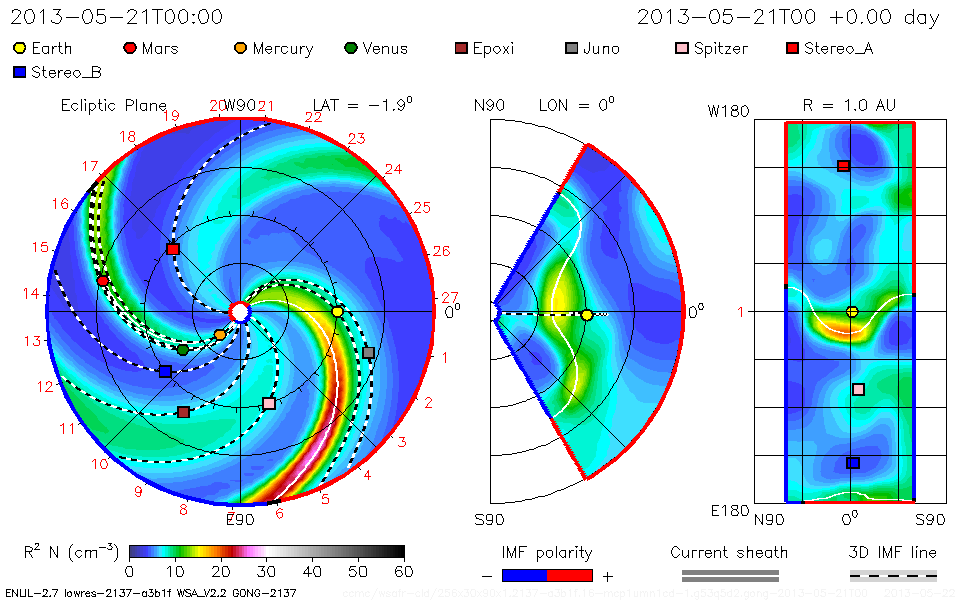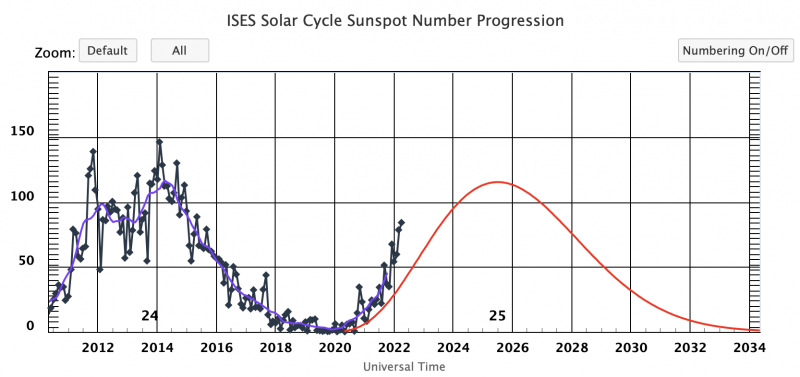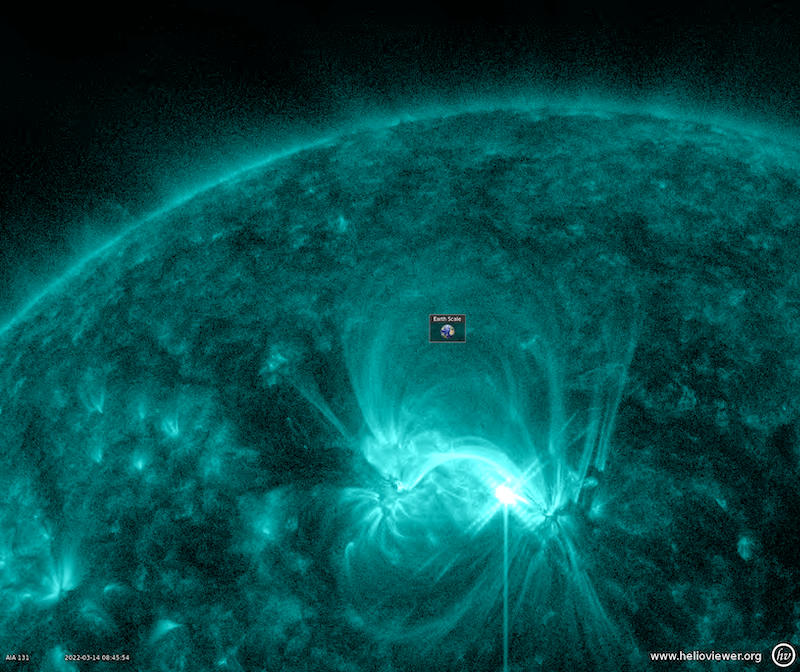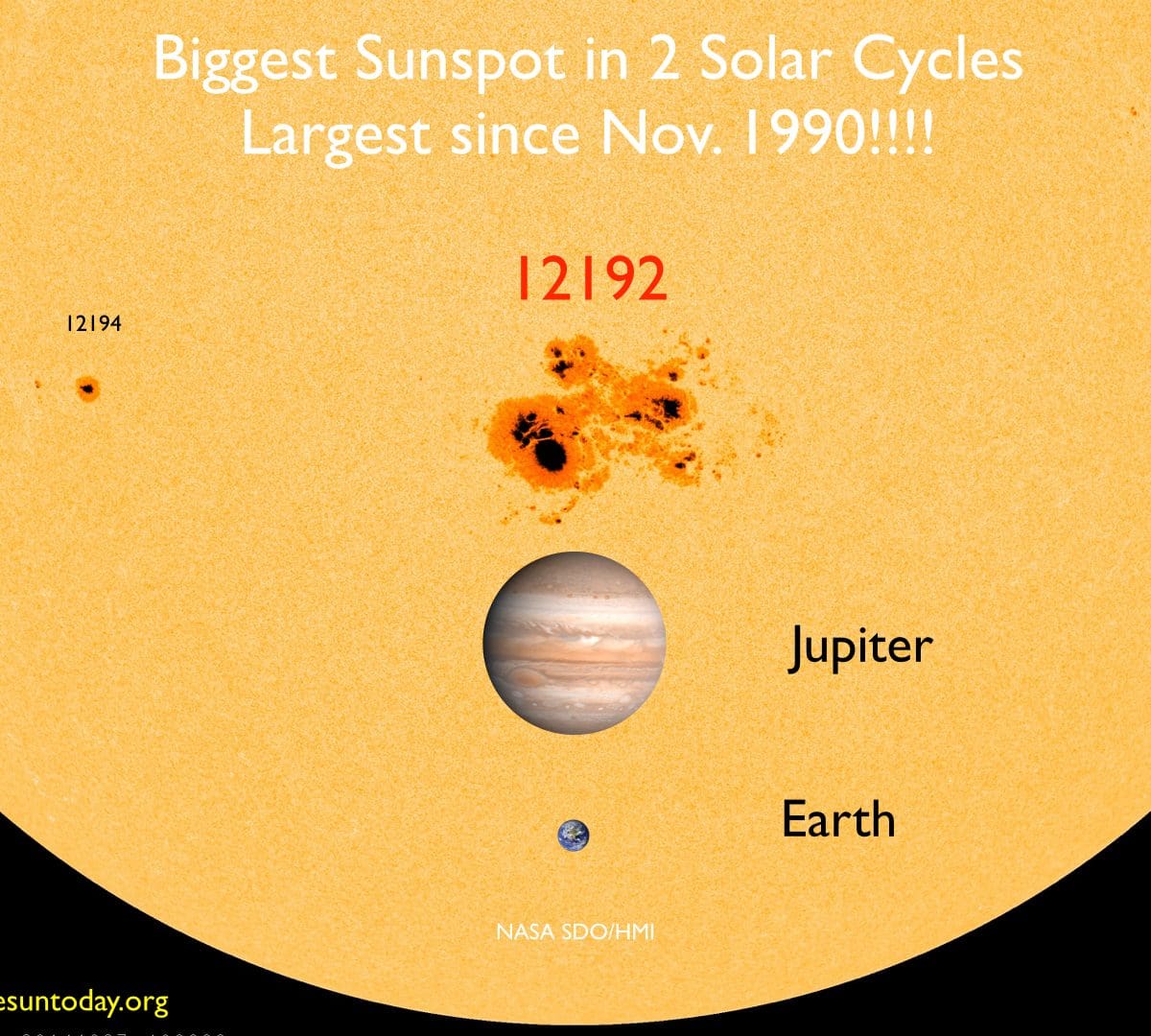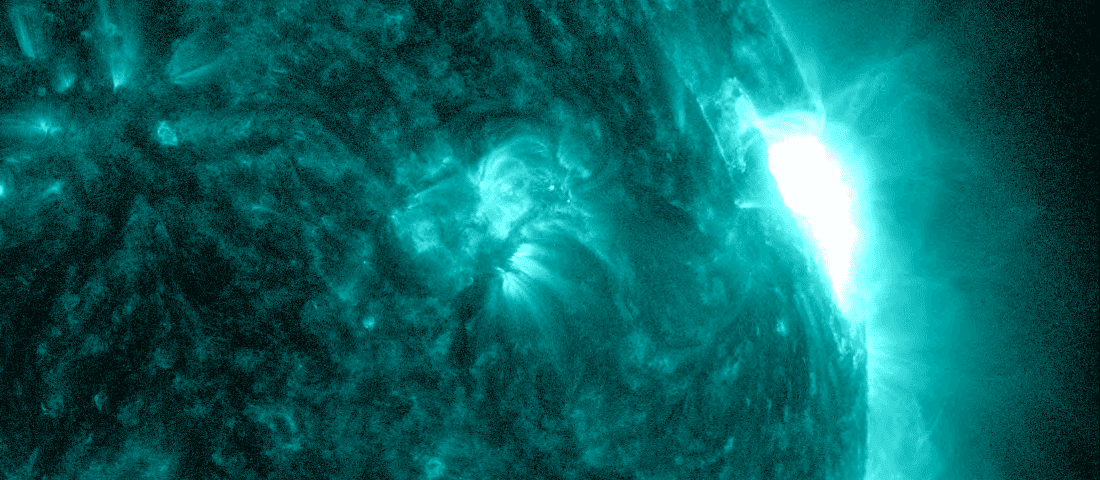
21:21 UT (5/23/2013) – Proton levels the eruption are still at the S2 NOAA alert level, down from S3. The particles are very apparent in SOHO/LASCO C2, showing up as “snow” on the images.
1:17 UT (5/23/2013) – Currently, a S2 level (scale of 1-5) proton is in effect as a result of the eruption.

GOES 5-minute averaged integral proton flux (protons/cm2-s-sr) as measured by the SWPC primary GOES satellite for energy thresholds of >=10, >=50, and >=100 MeV. SWPC’s proton event threshold is 10 protons/cm2-s-sr at >=10 MeV. Large particle fluxes have been associated with satellite single event upsets (SEUs).
19:20 UT – Based on preliminary heliospheric modeling carried out at NASA GSFC Space Weather Research Center, it is estimated that this CME (speed ~1200 km/s) will catch up to an earlier CME (starting on 5/22/2013 9:12 UT; speed ~650 km/s) and the leading edge of both CMEs will reach STEREO A at about 8:07 UT 5/24/2013 (plus minus 7 hours). The CMEs may possibly have a glancing blow at Earth at about 12 UT 5/25/2013 (plus minus 7 hours) but no major geomagnetic storm activity is expected. The roughly estimated expected range of the maximum Kp index is 3-5 (below minor).
15:38 UT – This video shows the eruption with the SDO/AIA instrument using composite 131,171 and 304 angstrom images.
14:49 UT – The flare peaked at 13:38 UT reaching M7.3. The CME from the filament eruption was observed by the STEREO Ahead spacecraft in Cor2.
14:00 UT (5/11/2013) – M5+ solar flare! At least an M5 reached at 13:23 UT (9:23 am EDT) on 5/22/2013. The GOES data is not updating online so the peak is not certain at the moment. Also, 10 MeV and 100 MeV proton levels have also increased. The flare is associated with a filament eruption so there is most likely a CME. Here is a snapshot of the event in the SDO/AIA 131 angstrom wavelength.
credit: NASA/SDO/STEREO, NASA/ESA/SOHO, NASA Space Weather Research Center and helioviewer



